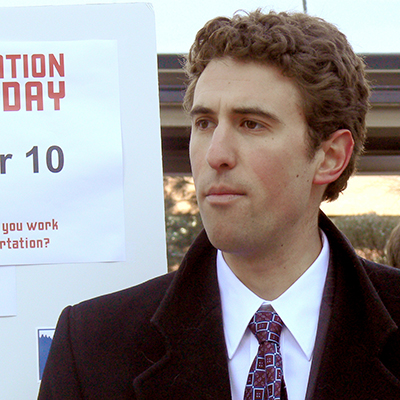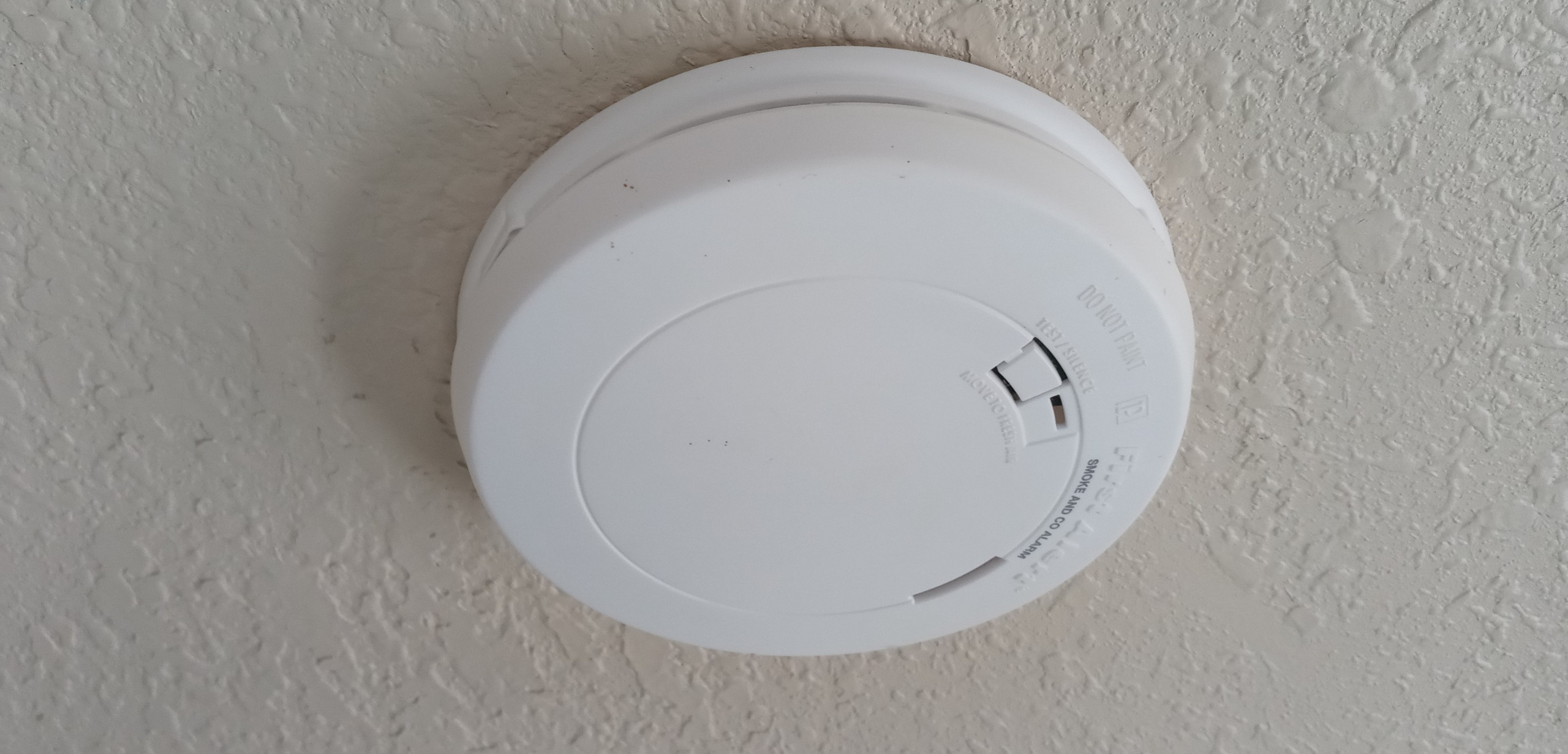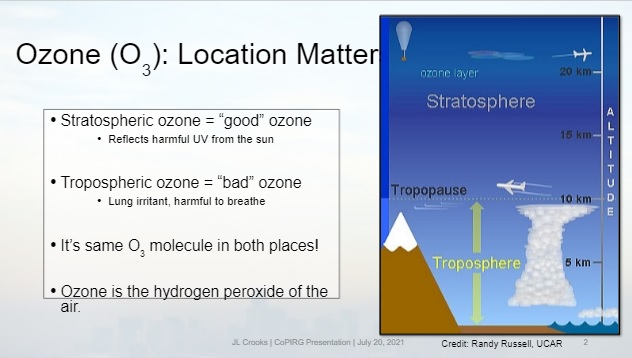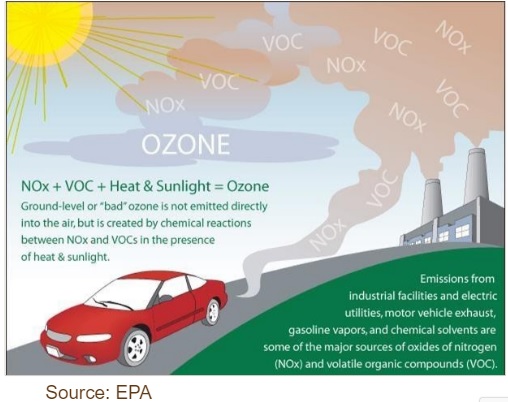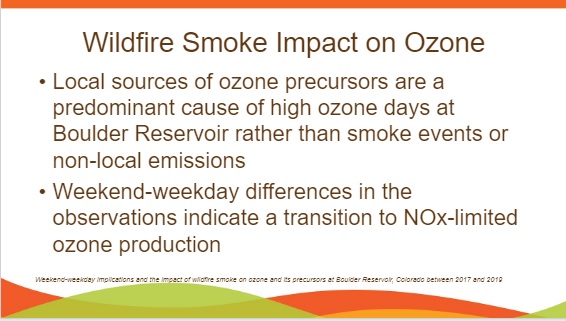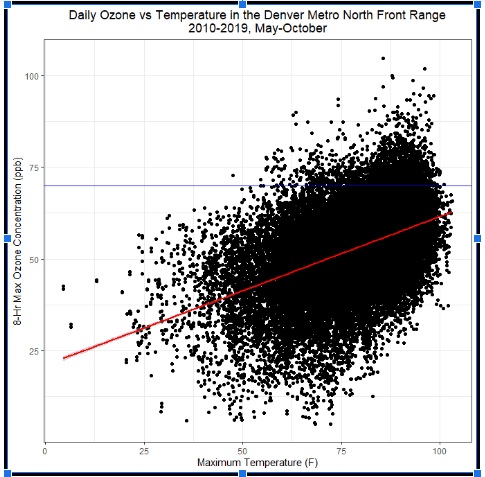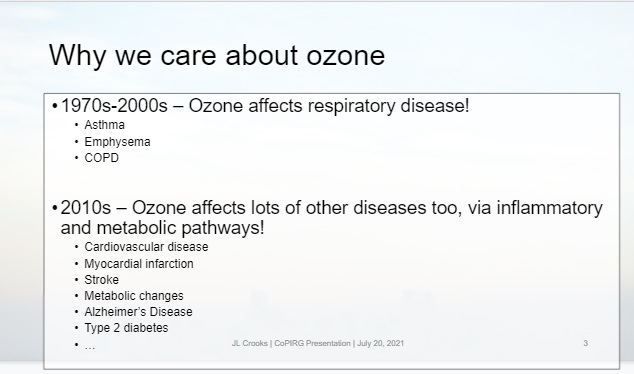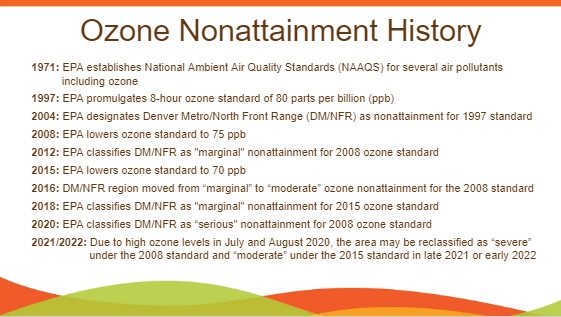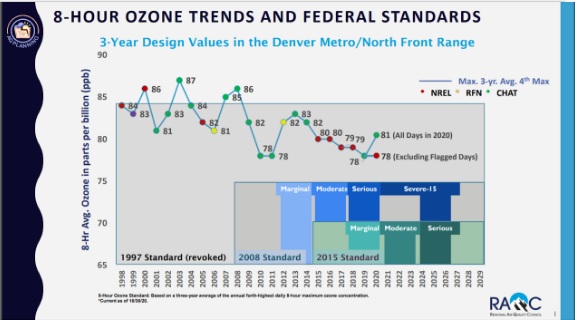Six actions in the next six months can cut ozone pollution
To reduce ozone pollution we must tackle the two largest contributors to ozone in the Front Range – transportation and oil and gas.
You’ll notice some of the actions coming up are focused on greenhouse gas emissions but so often the same strategies that reduce greenhouse gas emissions (like switching from a gas-powered vehicle to an electric vehicle) cut climate pollution and ozone pollution.
The ozone solutions fall into a couple of categories:
- Give people better options to get around so we don’t always have to drive our car to complete trips. Options include better bus service, teleworking options, and access to safe biking and walking infrastructure.
- Convert the vehicles we do have on the road to tailpipe free, electric-powered vehicles. Tailpipes are where a lot of the pollution comes from.
- Cut pollution from oil and gas drilling in Colorado.
Here are six major actions (OK, one is a bunch of little actions) that are happening in the next six months that, if done right, will bring ozone pollution down.
- Employer-based Trip Reduction Program – The Air Quality Control Commission (AQCC) is currently considering the Employer-based Trip Reduction Program (ETRP). The rule would help reduce pollution from vehicles by expanding options for employees to commute without driving alone every day. Options could include more teleworking, better access to transit with bus passes, carpool programs and amenities that help people walk and bike more. The rule will be decided at the AQCC’s August 18-20 rulemaking hearing.
- CDOT Greenhouse Gas Pollution Standard – This fall, the Colorado Department of Transportation (CDOT) will consider rules around reducing greenhouse gas emissions in the transportation sector. Transportation is the largest source of greenhouse gas emissions in Colorado, a leading contributor to climate change and the forest fires that contribute to ozone. Reducing greenhouse gas emissions in transportation would also result in less vehicle-emitted ozone pollutants. A decision is expected by the CDOT Transportation Commission later this fall.
- Implementation of Xcel’s Transportation Electrification Plan (TEP) – Electric vehicles produce zero tailpipe emissions and are an important way to reduce ozone pollution. Over the next three years, Xcel Energy will invest over $110 million in vehicle electrification strategies that could speed up the transition to cleaner vehicles. Much of Xcel Energy’s territory overlaps with parts of the state that failed to meet the ozone standard. Xcel is making decisions now on how they will invest in electrification.
- Oil and Gas Greenhouse Gas Rulemaking Effort – The Air Quality Control Commission (AQCC) is expected to kick off a rulemaking in September to reduce greenhouse gas emissions in the oil and gas sector. The commission is considering several strategies including improving equipment and processes, reducing the greenhouse gas intensity and overall emission reduction programs. More information here.
- Adoption of Cleaner Truck Rules – Colorado’s Greenhouse Gas Pollution Reduction Roadmap envisions a rulemaking at the AQCC in 2022 to adopt new rules to clean up trucks, including cutting tailpipe pollution and transitioning to electric-powered heavy-duty vehicles. There are several options other states are pursuing. An initial state-sponsored study should be completed this summer and the AQCC could take up the rule as soon as this November.
- Municipal Government Actions – Cities and counties can play a big role in reducing ozone pollution. Every year, municipalities make lots of decisions around how to spend millions of transportation dollars and how to guide development. Focusing transportation spending and development in ways that support walking, biking and transit are often overlooked solutions to our ozone pollution problems.
To underscore the importance of ensuring we get these actions right, just this week, the Polis Administration indicated that they will propose gutting the first action up – ETRP.
In a statement released during a pre-hearing, the administration said they would propose removing all of the pieces of the rule that would result in real pollution reductions, leaving in place a simple survey of employee trip patterns.
This action, coming the same week that we missed yet another major ozone pollution reduction deadline, is extremely disappointing.
It highlights the importance of the work we do – educating, organizing and advocacy – so we can lift up the public voice and ensure that our state and local officials hear that ozone smoke alarm calling for immediate and concrete action to put out the fire.
